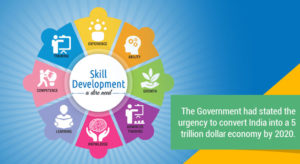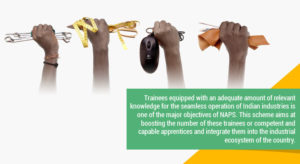
What precautions should factories take for protecting their workers from COVID-19
The name that is striking fears in the hearts of all people right now can be unanimously agreed upon, and that is nothing other than COVID-19 or the novel Coronavirus. This form of the virus had been unknown to humanity and medical science to date and hence the methods and the arsenal to fight it

Keeping Communication Clear Helps Solve Skills Gap Issues : Aviation Sector
One of the biggest challenges in the Indian aviation sector is with regard to Skill Gaps. Skill gaps, as the name suggests, are gaps in skill among trained personnel who can work for the Indian airline companies, military, and defence, as well as government agencies. This mismatch of skill to skills causes a critical gap

Benefits of Apprenticeship for Employers
There are several reasons to hire an apprentice. It is cost-effective means of developing skills in many industries, and it can also save on the costs of recruitment. It is also one of the quickest ways to develop skills. With the flexibility of working under an experienced worker, you can train your apprentices for particular

NEEM Scheme: A trainer’s point of view
As discussed currently in thousands of articles and news across the world, India is an emerging nation in terms of the number of the employable youth population of the country. Every nation enjoys this particular period of time in its economic timeline, where it provides a major opportunity for tremendous financial growth. This particular timeline

Importance of Skill Development for developing the Next Generation
According to the various surveys held, it is found that the emergence of technology is helping the country in developing its economy at a faster rate. The revolution in technology has embraced artificial intelligence, machine learning, and Big data and helping the country in its progress. This has developed a significant transformation and created various

How is the present skilling ecosystem in India ensuring a bright future for its youth
Modern vocational training in India has its origin or roots in the Industrial Training Institutes or ITIs and the Industrial Training Councils or ITCs. These have been the mainstay of the skilling initiative for the last five decades. These institutes were established under the auspices of the Ministry of Labour and Employment and the erstwhile

Challenges for skilling the Indian youth
Challenges In Indian Skills Development Efforts Mobilisation Pro-active participation by the industries and the employers Scalability The mismatch between youth aspirations and jobs Shortage of training infrastructure The Indian skill sector was languishing at just 2.8 lakh apprentices annually till 2010, which was almost half the number of skilled apprentices that the country had annual

How is NAPS fulfilling the urgency of skilling India’s workforce
With the dynamic increase of the employment opportunities in the country and the fortification of the national GDP, India has shifted the focus to understand the salient features of its workforce. The potential of the indigenous workforce is massive. Flagship programs that have been initiated across the nation like Make in India, Digital India, BharatMala,

Challenges, Achievements and the Future of Skilling the Indian Youth
The demographic dividend of India has endowed it with a lot of plausible opportunities. There is an immense scope of economic development and restructuring the socio-economic landscape for the nation. As it stands, by the end of 2020, at least 65% of the Indian population will be at the working-age group of 15 to 59

How is NAPS providing a full range of employability skills in India
The NAPS programme was initiated by the Government of India in August of 2016 with the primary objective to boost the number of skilled and dextrous apprentices in the country. India was languishing behind numerous countries because of merely 2.5 lakh apprentices it had around 2010. The Government, working in conjunction to the Ministry of

Determining the Challenges to Skill Development in India and Finding the Ways to Handle Them
Indian economy is transforming at a fast rate with respect to its structure, technology, and demography and therefore, the prospective candidates to the labor force should be very skilled in order to be considered employable. About 70 million people of working age are presumed to be a part of the labor force of the country

How is NAPS providing demand-driven interventions in various industrial sectors
India is one of the fastest-growing and rapidly emerging economies of the world with a mushrooming youth population, which the average age of the Indian population tending to 29 years by the end of 2020. Since the services sector of the Indian industries is one of the most rapidly growing sectors, there is a huge

